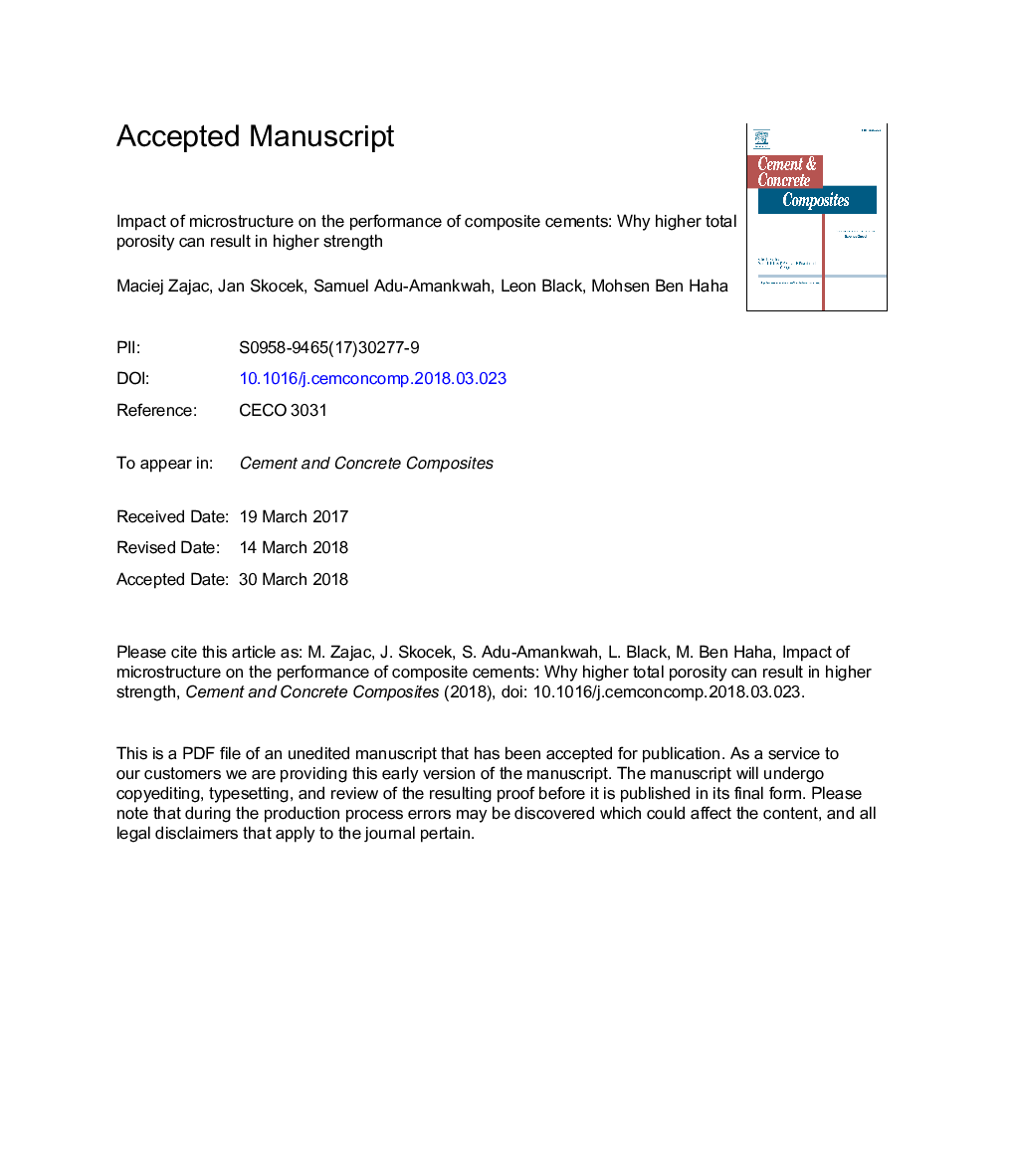| Article ID | Journal | Published Year | Pages | File Type |
|---|---|---|---|---|
| 7883747 | Cement and Concrete Composites | 2018 | 28 Pages |
Abstract
This paper describes the underlying principles behind the evolution in performance of ternary composite cements comprising Portland cement clinker, slag and limestone. By using the predicted phase assemblage as an input for the micromechanical model, the mechanisms underlying the evolution of mortar strength and Young's modulus were analyzed and quantified. This allowed the roles of hydrate assemblages and porosity distribution on the evolution of performance to be explained and quantified. Slag hydration results in the formation of a microstructure more efficient for development of compressive strength and elastic stiffness. Limestone further improves microstructure and enhances reactivity of the systems studied.
Related Topics
Physical Sciences and Engineering
Engineering
Industrial and Manufacturing Engineering
Authors
Maciej Zajac, Jan Skocek, Samuel Adu-Amankwah, Leon Black, Mohsen Ben Haha,
